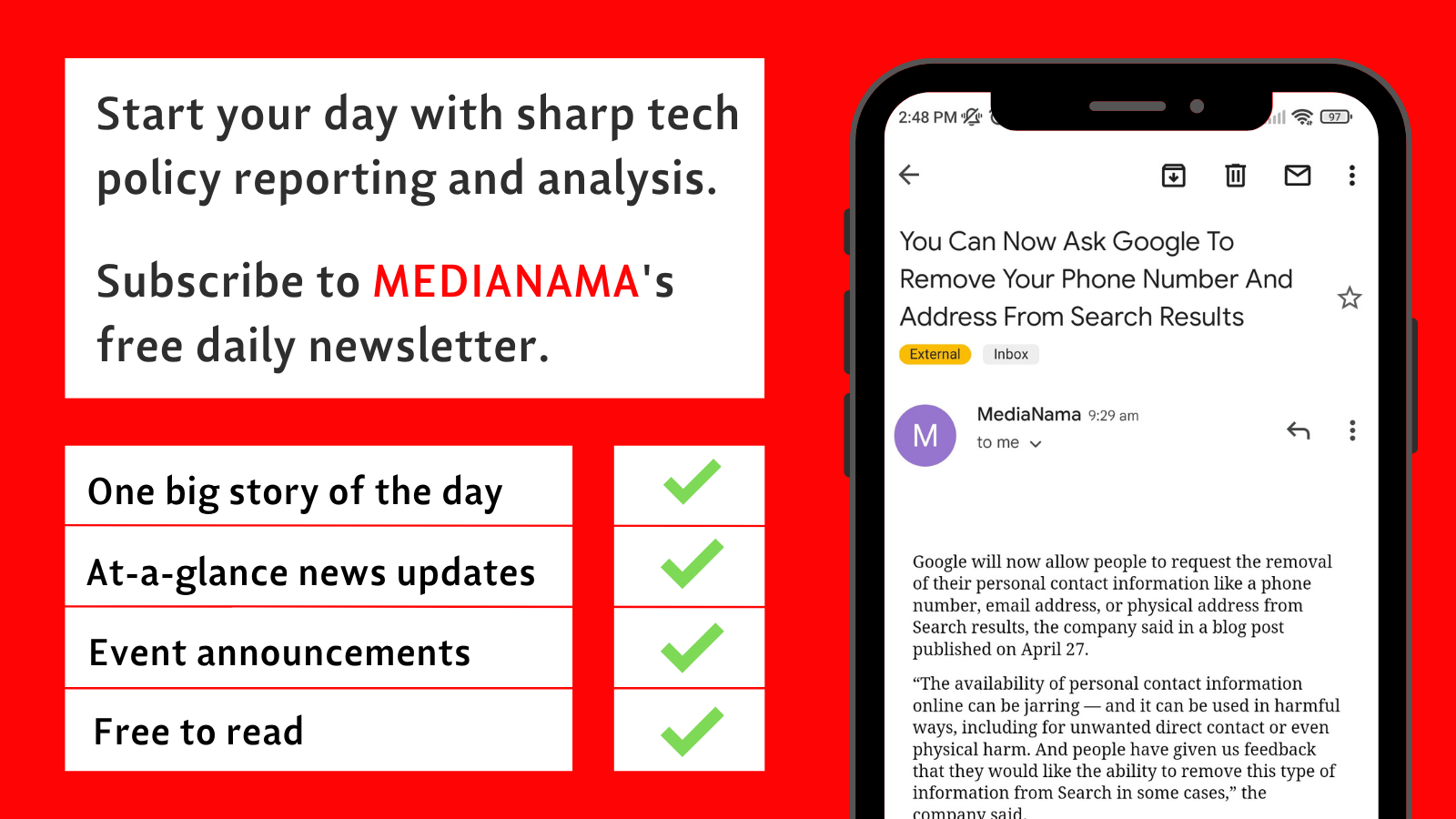The definition of aggregators covered under the scheme has been expanded, Electric Vehicle (EV) induction targets have been changed, penalties have been changed for failure to meet such EV induction targets, compliance officers have been mandated for such aggregators – this and several other obligations have been modified in the the revised Draft Motor Vehicles Aggregator Scheme released by the Delhi government on July 5th. The document, which was first released on January 24th, has been circulated for public comments again until July 26th.
The scheme impacts ‘aggregators’ i.e., companies such as Ola, Uber, Meru Cabs, Zomato, Swiggy and even other services operational in New Delhi.
Why it matters? Multiple State-wise regulations of aggregators and their practices are reportedly in force or being developed- for example, Karnataka (The Karnataka On- demand Transportation Technology Aggregators Rules, 2016), Maharashtra (Draft Maharashtra Regulation of Aggregators Rules 2021), and Uttar Pradesh which Hindustan Times reported was working on a policy in April. At the central government’s level, there is also the Motor Vehicle Aggregator Guidelines 2020 which State governments can use as a guide while formulating their own guidelines or otherwise regulating aggregators in their jurisdiction.
However, Delhi’s scheme also needs to be looked in the context of industry body Internet And Mobile Association of India’s (IAMAI) statement criticising various clauses of its previous version. While some of the clauses have been modified, it will be interesting to see how the industry and other stakeholders receive the new scheme.
Comments have been invited on the document until July 26th and can be sent via email to commtpt@nic.in with a copy to delhievcell-1@delhi.nic.in or by post addressed to the Principal Secretary-cum Commissioner (Transport), Delhi government.
Never miss out on important developments in tech policy, whether in India or across the world. Sign up for our morning newsletter, with a “Free Read of the Day”, to experience MediaNama in a whole new way.
Who will the new scheme cover?
Change in definition of Aggregators: The new scheme changes the definition of aggregators. The current definition of aggregators under the scheme is:
‘person or entity who owns, operate, or manages a fleet of vehicles either through a digital or electronic facility, or any other means to connect a passenger with a driver for the purpose of transportation, or for a driver offering to deliver/pick up a product, package or parcel to connect with a seller, e-commerce entity or consignor’
The earlier version had said that an aggregator would mean ‘any person/entity which owns, operates, or manages a digital or an electronic facility or a web platform for a passenger to connect with a driver for the purpose of transportation, or connects a driver offering to deliver/pick up a product, package or parcel from a seller, e-commerce entity or consignor’.
Aggregators with smaller fleet now covered: “This scheme shall be applicable to Aggregators (as defined under Section 2.2 of the scheme) with at least 25 motor vehicles in their aggregated fleet and to the vehicles that may be integrated by the Aggregator,” the draft says. This is down from the 50 vehicle requirement mentioned in the earlier version.
What are the new obligations for aggregators?
Targets for inducting electric vehicles in the fleet
- The scheme broadly retains the targets set for aggregators to induct EVs into their fleets from the previous version. Interestingly, the new draft sets the targets only specifying passenger vehicles in fleets providing passenger transport services as opposed to the previous version where the conversion targets were set for both passenger and commercial vehicles being used for passenger transportation. The implications of this and how this will be implemented is unclear as the draft otherwise specifies that 3 and 4-wheelers inducted into aggregator fleets for passenger transport have to have commercial registrations.
- Only electric vehicles will be inducted into the fleet of 2-wheeler bike hailing and sharing services once the scheme goes into effect, the draft says. Further, by the end of the second year after the enactment of the scheme, all vehicles in such a fleet will have to be EVs, the scheme says.
- The new scheme specifies that a 100% conversion to EVs must be undertaken by aggregators by April 1st, 2030. This is uniform across aggregators using 2-wheelers, 3-wheelers, and 4-wheelers for package deliveries as well as passenger transport.
- The date from which the targets were have now been set to the date of issue of notification, as opposed to the earlier version where they were to go into force from the day an aggregator license was issued to the entity.
To illustrate this further, below are the targets set for new EVs to be inducted into the aggregator fleets:
For 3-wheelers providing passenger transport services
10% of the new vehicles inducted within the first 6 months from the day of notification of the scheme
25% of the new vehicles inducted within 1 year from the day of notification of the scheme
50% of the new vehicles inducted within 2 years from the day of notification of the scheme; and so on.
For 4-wheelers providing passenger transport services
5% of the new vehicles inducted within the first 6 months from the day of notification of the scheme
15% of the new vehicles inducted within 1 year from the day of notification of the scheme
25% of the new vehicles inducted within 2 years from the day of notification of the scheme; and so on.
For 2-wheelers and 3-wheelers (commercial) providing ‘last-mile delivery’ services
10% of the new vehicles inducted within the first 6 months from the day of notification of the scheme
25% of the new vehicles inducted within 1 year from the day of notification of the scheme
50% of the new vehicles inducted within 2 years from the day of notification of the scheme; and so on.
For 4-wheelers providing passenger ‘last-mile delivery’ services
5% of the new vehicles inducted within the first 6 months from the day of notification of the scheme
15% of the new vehicles inducted within 1 year from the day of notification of the scheme
25% of the new vehicles inducted within 2 years from the day of notification of the scheme; and so on.
As opposed to the previous draft, the new scheme outlines EV targets for vehicles involved in ‘passenger transport’ as well as ‘last mile delivery services’. While the scheme doesn’t define the two, the change may be as a result of IAMAI’s statement. In its statement, IAMAI had asked that scheme make distinctions between aggregators of varying natures – such as those providing e-commerce services, last-mile delivery and those providing passenger transport.
Penalties for missing EV induction targets
An aggregator would be restricted from registering any new vehicles in their fleet until they meet their minimum EV targets, the new draft says. It further specifies that a fine of Rs 50,000 per vehicle could be levied if conventional vehicles are still plied by an aggregator after the 100% compliance deadline of April 1, 2030.
The earlier scheme had specified that a fine of Rs 1,000 each day, per vehicle will be levied on an aggregator if it fails to induct the target of electric vehicles in time.
Penalty for not registering vehicles
Under the scheme, drivers and their vehicles on-boarded by an aggregator have to be registered on a portal created by the transport department of the Delhi government.In case this is not done, the aggregator shall be liable to pay ‘a monetary fine of INR. 15,000/- per vehicle,’ the new scheme says.
The earlier scheme proposed levying a fine of Rs 500 per day and vehicle, in case the aggregator had not disclosed such information even after 100 days since the enactment of the scheme.
Requirement for a compliance officer
“Any applicant seeking issuance of a license to operate as an Aggregator, will have to designate a ‘Compliance Officer’ (who shall be the point of contact) at the portal as notified by the Transport Department, GNCTD (Government of the National Capital Territory of Delhi), for the purpose of operations of this scheme,” the new scheme says.
Obligation to provide quarterly reports to the government
“The Aggregator should provide quarterly reports on driver ratings and grievances received against the drivers to the Transport Department, GNCTD and all records with regards to driver rating, and grievance registered shall be available for inspection by the Transport Department/authorised authorities of GNCTD,” the draft says.
This post is released under a CC-BY-SA 4.0 license. Please feel free to republish on your site, with attribution and a link. Adaptation and rewriting, though allowed, should be true to the original.
Also read:
































